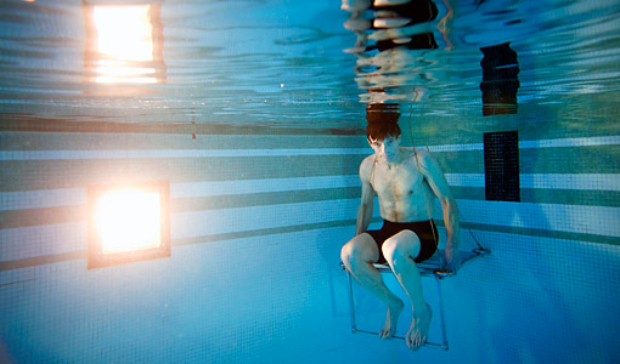Day job: Assistant professor – Health and Human Performance Department (20 years).
Fitness inspiration: I became interested in health and fitness in my early 20s. I was grossly overweight (about 230 pounds). I started to run and became interested in exercise physiology. The rest is history.
Still can’t believe: I got to play catch with Yogi Berra before I threw batting practice to the World Champion New York Mets in February 1970.
What is this thing? An underwater weighing device.
Target market: For the last 15 years, I’ve used this device to calculate body fat percentage for amateur and professional athletes, students, research subjects and obese patients.
Where there’s a need: To the best of my knowledge, I am the only individual that offers this service to the general public. While many major universities have this type of apparatus for research purposes, they’re generally not interested in providing the service to the public.
How does it work? Underwater weighing is the most accurate method of assessing body fat percentage. The basic premise is that muscle is dense (high weight-to-volume ratio) and causes you to sink in the water, while fat is much less dense and causes you to float. The load cell hanging from the support structure measures a subject’s weight in water. Then I run a calculation for the subject.
Analyze fat: The athletic population uses the information to optimize their lean mass-to-fat mass ratio, which is especially important in events that require an individual to lift or move their body weight. I also test obese patients to help them develop a goal for weight or percent fat. In this population, I often do a basal metabolic rate, which is a measure of caloric expenditure in the body at rest. This data helps when planning a diet and exercise plan.
Design by Menards? I had the concept in mind in the early ’90s, but four mechanical engineering students from the University of Minnesota designed and built the device for me. (Note: This was before St. Thomas had an Engineering Department.)
Do the math: I do six to eight weighings per week. I’ve been offering the test for 12 years now, so I would estimate that I’ve done more than 4,000 underwater weighing tests. I even did one for an out-of-town client on Christmas Day a few years ago.
This is the first in a series of profiles that examine some of the intriguing pastimes of our colleagues.





